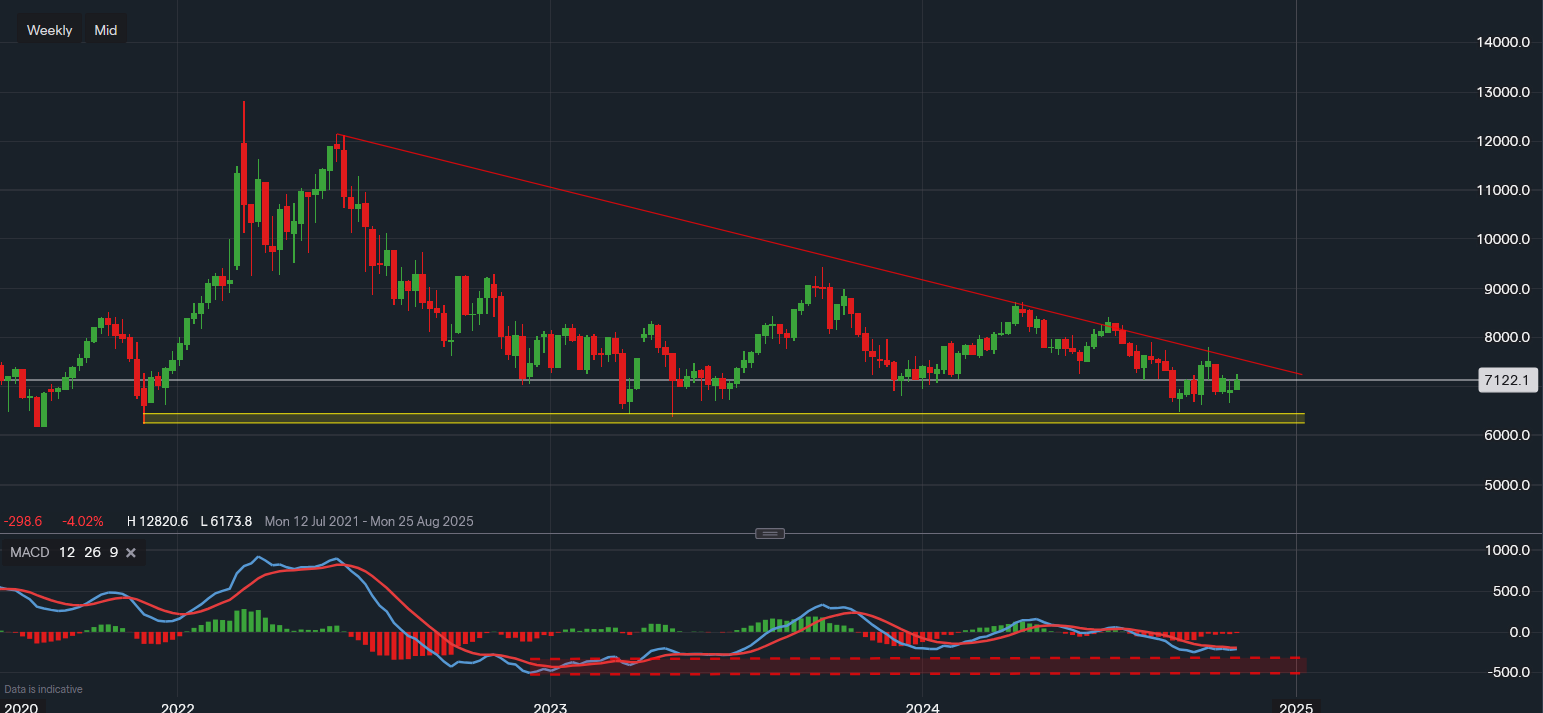With Republicans back in power, US crude oil prices could experience shifts due to potential policy changes. Currently, crude oil is trading at around $71.22 per barrel. Donald Trump’s anticipated focus on reducing energy costs, loosening regulations, and boosting domestic oil production may apply downward pressure on oil prices in the medium to long term. In the short term, however, ongoing geopolitical tensions may support oil prices, leading to potential rallies.
Key Technical Levels and Resistance
On the weekly chart, a descending trendline continues to act as a significant resistance level for crude oil. Prices may retest this trendline in the near term, with current technical support around $66.61. Crude oil is on track for a positive week, with trendline resistance expected between $74 and $75. If prices break above this resistance, they could extend toward the $78-$80 range, though some Wall Street analysts caution that this move may not be sustainable, especially if Trump aims for peace initiatives in conflicts like the Ukraine-Russia war and Israel-Palestine, which could stabilize oil markets.
Downside Risks and Key Support Levels
On the downside, strong support lies around $61-$62, a level that has held firm since November 2021. Should this support break, traders may look toward $50 per barrel as the next target.
Momentum Indicators and Medium-to-Long-Term Outlook
For the medium to long term, crude oil momentum remains bearish. The MACD has shown signs of stabilisation recently, yet the channel drawn on the chart suggests further downside potential. While not currently in oversold territory based on historical trends, this doesn’t rule out price drops, and increased volatility should be expected.
Investors should monitor these key levels and the impact of geopolitical developments, as well as any policy changes that could influence supply and demand dynamics for crude oil in the coming months.

